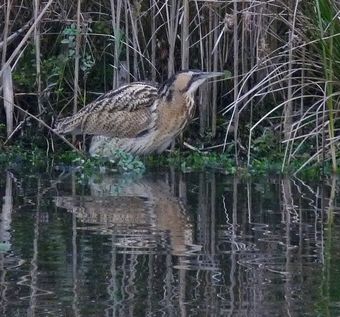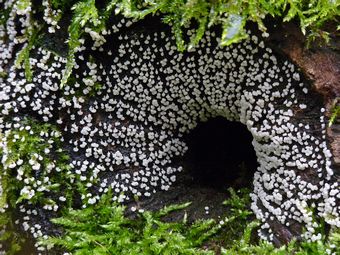Blog
Boar's Well, 22nd Jan 10
WFV Tuesday 19th January 2010 BeesNew Year Social Bradford YMCA
WFV Xmas Event 8th Dec 2009
Our Xmas event started at 10 am at the YMCA. Sue showed us some of the superb photos of wild life and scenery she had taken since becoming involved with Bees, a real credit to her and the group.There were insects , butterflies and dragonflies , reptiles lizards and newts, flora , birds to enjoy as well as reminders of the superb scenery and good weather we had experienced on our outings.
Sue's "piece de resistance"which we all admired was her slide show to musical accompaniment - a truly professional presentation.
30 of us then departed in the direction of Queensbury for a festive meal.
Margaret
WFV Bees Slide Show YMCA 24th November 2009
We gathered at the YMCA for two superb slide shows. Stuart showed us the slides of the antipodean journey he and Gillian had completed in Feb 2009 visiting Hong Kong , Australia- Sydney and Melbourne then New Zealand both North and South Island and a final call at Singapore on the return journey. For some it was a reminder of destinations visited, for others it was an opportunity to enjoy their holiday.
Annie showed us slides of the spectacular and colourful people and scenery of Vietnam . There is more to come we have been told, watch this space!
Margaret
Friday 4th December 2009, Brackenhill Urban Landscape Area
Friday 27th November, Rodley Nature Reserve
Potteric Carr, YWT reserve, 10th November, 2009
 BitternStuart and Joan led today's trip to Potteric Carr nature reserve, attended by 17 participants. On arrival, maps of the site were obtained from the visitor centre and distributed amongst the group. Two general camps were then formed - the Birdwatchers and the Fungal Foragers. What a choice! I fell in with the Birdwatchers, eager to see a bittern. The birdwatchers headed to the hides overlooking Decoy Marsh, where we saw teal and shovelers, and we were then afforded good views of two snipe foraging on the edge of an island. We continued on, passing a reedbed, where we heard the distinctive call of a Cetti's warbler. Three of us waited patiently for a sighting of this elusive little bird, but to no avail, and we headed on towards the visitor centre. Our leader had told us it was impossible to get lost here, but we managed the impossible quite easily, and took several wrong turnings. Anyway, it was worth it as we sighted a redwing and we saw some unusual fungi along the way.Arrival at the visitor centre heralded lunch - some had hot food in the cafe, with Shepherds pie being a firm favourite. Others had packed lunches in the hide, where we observed several birds on and around the feeders including reed bunting and jay. After lunch we proceeded to the Piper Marsh hide. We didn't have to wait very long, before a bittern emerged from the reeds on the edge of the island, stalking through the reeds but sometimes coming right out into the open, enabling us to get really good views. This was the highlight of our birding day, which saw us record 43 species.
BitternStuart and Joan led today's trip to Potteric Carr nature reserve, attended by 17 participants. On arrival, maps of the site were obtained from the visitor centre and distributed amongst the group. Two general camps were then formed - the Birdwatchers and the Fungal Foragers. What a choice! I fell in with the Birdwatchers, eager to see a bittern. The birdwatchers headed to the hides overlooking Decoy Marsh, where we saw teal and shovelers, and we were then afforded good views of two snipe foraging on the edge of an island. We continued on, passing a reedbed, where we heard the distinctive call of a Cetti's warbler. Three of us waited patiently for a sighting of this elusive little bird, but to no avail, and we headed on towards the visitor centre. Our leader had told us it was impossible to get lost here, but we managed the impossible quite easily, and took several wrong turnings. Anyway, it was worth it as we sighted a redwing and we saw some unusual fungi along the way.Arrival at the visitor centre heralded lunch - some had hot food in the cafe, with Shepherds pie being a firm favourite. Others had packed lunches in the hide, where we observed several birds on and around the feeders including reed bunting and jay. After lunch we proceeded to the Piper Marsh hide. We didn't have to wait very long, before a bittern emerged from the reeds on the edge of the island, stalking through the reeds but sometimes coming right out into the open, enabling us to get really good views. This was the highlight of our birding day, which saw us record 43 species.
The Fungal Foragers had intended to explore a certain part of the reserve which was thought to be particularly good for fungi, but they never arrived there as there was so much to see alongside all the paths. Right outside the visitor centre, a destroying angel was seen. Then there were the alien-like earth stars and the golden spindles, and so it continued.... Particular highlights were the panther cap, amanita pantherina and the caterpillar fungus, cordyceps militaris, which parasitises insects.32 flowering plants and ferns were recorded.
It was a cold and dull day, but it had stayed dry and both the Bird Watchers and the Fungal Foragers returned home with smiles on their faces, even though we had only explored a fraction of this wonderful nature reserve.
Sue
WFV Hardcastle Crags 27.10.09
 Spot Fungus?Pennine mist greeted the 15 members of our group today when we arrived at Hardcastle Crags to enjoy a mild autumnal fungi foray in millstone grit country. The mist evaporated as the day progressed and we had fine cloudy weather for our visit. The identification of the variety of fungi and ferns distracted us to the extent that it took two hours to meander the 1.5 miles to Gibson Mill, the National Trust's flagship sustainable property, where we enjoyed our lunch and a look round the mill. An almost equally slow return to the minibus completed our day during which we recorded 35 species of fungi, 11 ferns and not a great number of birds. Number 1 in the fungi hit parade was Grisette (Amarita vaginata) which was followed in second place for most of the day by Jelly Babies (Leotica lubrica) but this species was relegated to number 3 late in the day by White Saddle (Helvella crispa) - a first sighting for Joan, in itself a remarkable occurrance! The diversity of habitat - oak/beech/pine - was matched by the diversity in the knowledge of the members of our group as the experts discussed the finer points of identification whilst the novices tried to get to grips with the difference between the various species of fern. It wasn't a good day for the birders, but we did manage to record nuthatch, goldcrest, dipper and redwing in our total during another enjoyable day which was very ably led by Joan, Veronica and Eric.
Spot Fungus?Pennine mist greeted the 15 members of our group today when we arrived at Hardcastle Crags to enjoy a mild autumnal fungi foray in millstone grit country. The mist evaporated as the day progressed and we had fine cloudy weather for our visit. The identification of the variety of fungi and ferns distracted us to the extent that it took two hours to meander the 1.5 miles to Gibson Mill, the National Trust's flagship sustainable property, where we enjoyed our lunch and a look round the mill. An almost equally slow return to the minibus completed our day during which we recorded 35 species of fungi, 11 ferns and not a great number of birds. Number 1 in the fungi hit parade was Grisette (Amarita vaginata) which was followed in second place for most of the day by Jelly Babies (Leotica lubrica) but this species was relegated to number 3 late in the day by White Saddle (Helvella crispa) - a first sighting for Joan, in itself a remarkable occurrance! The diversity of habitat - oak/beech/pine - was matched by the diversity in the knowledge of the members of our group as the experts discussed the finer points of identification whilst the novices tried to get to grips with the difference between the various species of fern. It wasn't a good day for the birders, but we did manage to record nuthatch, goldcrest, dipper and redwing in our total during another enjoyable day which was very ably led by Joan, Veronica and Eric.
Stuart
Wildlife Photography competition
I came across information about a wildlife photography exhibition on the Natural England website. Follow the link below to see where the winning photographs are being exhibited and - more importantly - how to find out about next year's competition!
http://www.naturalengland.org.uk/gettinginvolved/photographywinners.aspx
